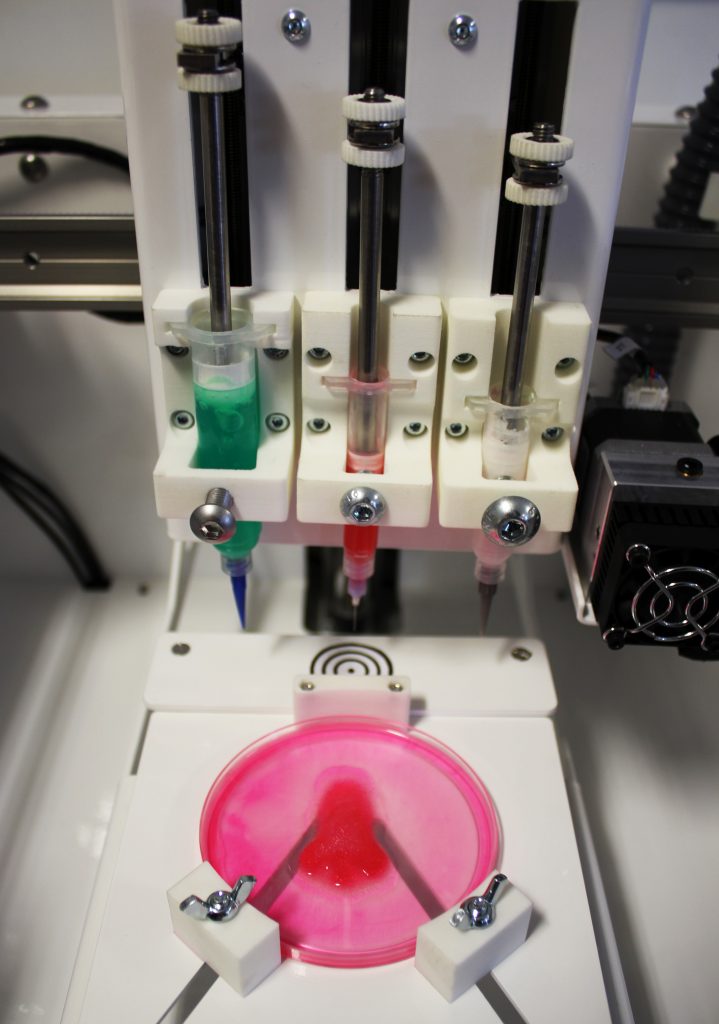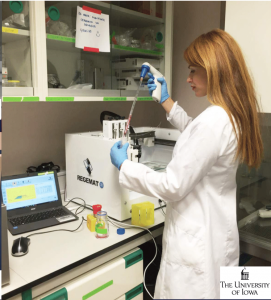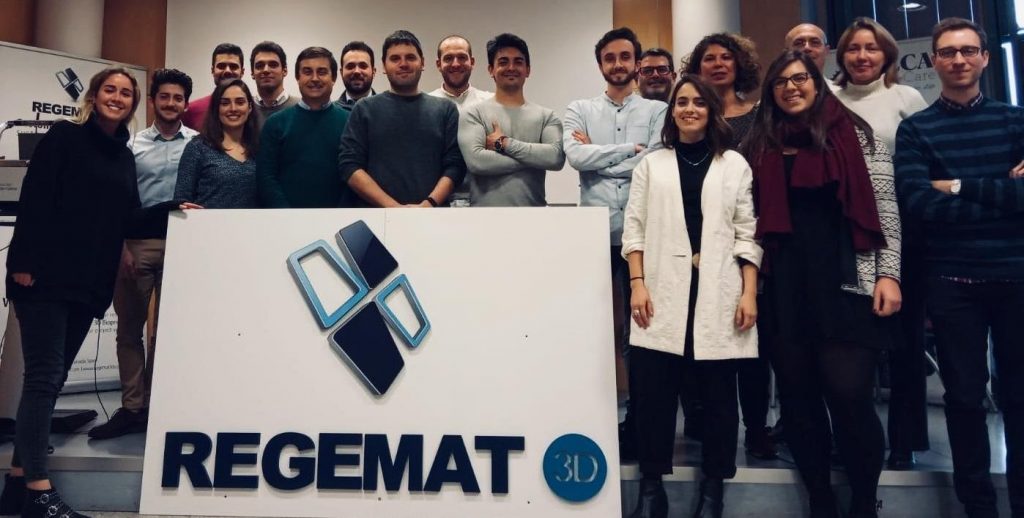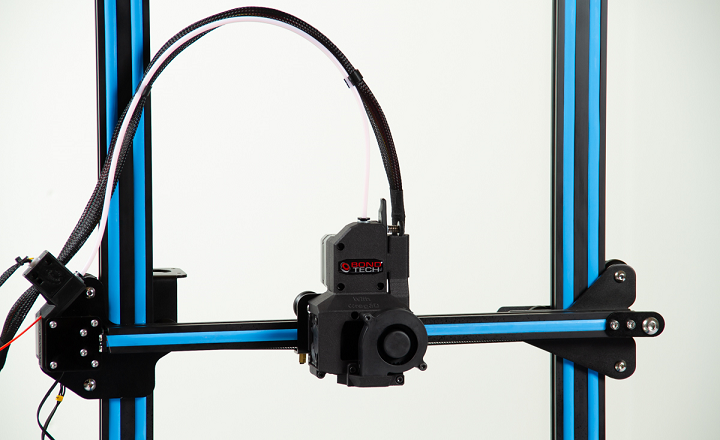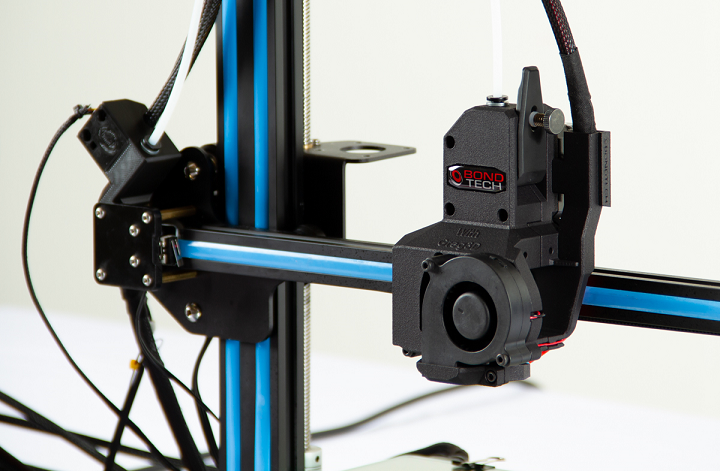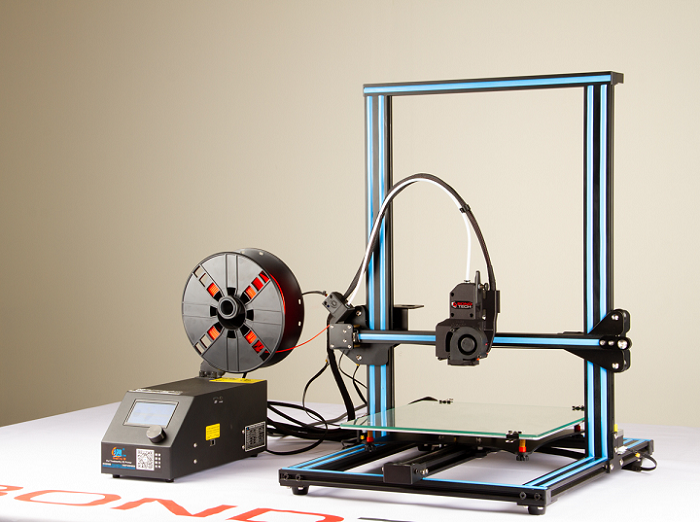LEGO MINIFIG TOILET PAPER HOLDER
Spanish Company BRECA Health Care is at the Forefront of Medical Devices & Bioprinting
 In 2018 Spain’s health care system ranked third in the world, behind Hong Kong and Singapore, and first in Europe according to a Bloomberg study, so it’s no wonder that research and development of bioprinting technologies are heavily pushing to make the country a haven for its patients. In 2011, industrial engineer José Manuel Baena funded BRECA, a Granada-based healthcare company with its sights set on helping medicine solve some of the most complex pathologies out there. BRECA is a pioneer in Europe, specializing in the design, manufacture and marketing of customized implants. It is also one of the first companies in the world to manufacture a 3D printed implant using a combination of 3D printed made-to-measure synthetic medical devices and bioprinted structures to regenerate a lesion. It’s all about solving the greatest number of pathologies for Baena.
In 2018 Spain’s health care system ranked third in the world, behind Hong Kong and Singapore, and first in Europe according to a Bloomberg study, so it’s no wonder that research and development of bioprinting technologies are heavily pushing to make the country a haven for its patients. In 2011, industrial engineer José Manuel Baena funded BRECA, a Granada-based healthcare company with its sights set on helping medicine solve some of the most complex pathologies out there. BRECA is a pioneer in Europe, specializing in the design, manufacture and marketing of customized implants. It is also one of the first companies in the world to manufacture a 3D printed implant using a combination of 3D printed made-to-measure synthetic medical devices and bioprinted structures to regenerate a lesion. It’s all about solving the greatest number of pathologies for Baena.
“There are many diseases in the world and most of us are going to be users of these medical solutions some day, so investing time in creating the necessary equipment to help the medical community is essential,” Baena told 3DPrint.com during an interview.
The founder of BRECA Health Care is also founder and CEO of REGEMAT 3D, a startup focusing on regenerative medicine, developing custom hardware and software required and demanded by some of the mayor hospitals and research universities in the region, as well as creating bioinks for bioprinting -from commercial to bioinks developed with university labs made of cellulose, colagen paste and with thermoplastic properties ideal for cellular therapy. They develop their own bioprinting systems, the BIO V1 machines, and customize them for their users’ applications according to the requirements of each investigation. It was back in 2011 when Baena met Juan Antonio Marchal, a professor at the Biomedical Research Centre (CIBM) of the Universidad de Granada, in Spain, working with cells and looking to make scaffolds and 3D matrices, that his interest in regenerative medicine peaked, so he began creating technology and synthetic materials to make cells that would help doctors repair and regenerate injuries.
“I see an exciting future ahead, with 3D printing offering many opportunities and applications in regenerative and therapy medicine. The next stage of bioprinting is to combine several tissues and build in vitro organs, but that could take decades. To get to a point where we can create functional complex solid organs, we need more developments, research, more people interested in using this technology, which is a fascinating tool for in-depth knowledge on the future creation of organs. It is also important to understand how bioreactors and decellularization will help us to develop functional tissues and organs. Which is why we have groups of researchers currently working on these applications, both in the short-term and looking way ahead into the future,” suggested Baena, one of the many enthusiasts who are trying to bridge 3D printing technology with medicine.
There are a lot of opportunities right now for companies like BRECA, like the combination of 3D printed custom made synthetic medical devices and bioprinted structures to regenerate an injury. According to Baena, in the past, if you wanted to do a reconstruction using biomaterials that biodegrade, you were restricted by the geometry and performance of sized medical devices. But now with 3D printing they offer customized solutions even using autologous cells of the patient to enhance the regeneration. REGEMAT 3D’s bioprinting platform is ideal for developing this type of customized options and along with BRECA they are very successful in bringing 3D printed implants and prosthesis to the clinical application with optimum results.
BRECA was one of the pioneer companies in bioprinting, introducing the first bioprinter in the country. Today, they are the only Spanish company that designs and manufactures them on site. They also create bioreactors and in 2018 attempted to engineer cartilage tissue, one of the most promising treatments for articular cartilage defects, thanks to a bioreactor designed to implement a non-invasive real-time monitoring of the neo-cartilage tissue formation processes through ultrasonic signal analysis. Polylactic acid (PLA) scaffolds were printed and seeded with human chondrocytes and then, they were cultured in an ultrasound-integrated bioreactor. The team used a bioreactor system to validate ultrasound data against proliferation, gene expression and quantitative biochemistry of in vitro 3D chondrocytes.
With a total of 200 clinical cases all over the world, BRECA is helping doctors transition to a more customized solution that will improve patients’ lives. Through more personalized treatments, reducing complex surgical times and costs, the company is using 3D printing technologies for reconstruction of injuries in cranioplasty, maxillofacial, bone and cartilage, pediatric and thoracic surgery, neurosurgery, as well as other reconstructions with tailor-made surgical guides. Various reconstruction surgeries were performed at the University Hospital of La Paz, one of BRECA’s research partners, and where Ramón Cantero and Baena coordinate the 3D Tissue Engineering and Printing Platform (PITI3D), which provides ingredients and processes to generate functional tissues.
“Last year we started working with PITI 3D, a fantastic 3D printing platform for tissue engineering at one of the most innovative hospitals in Spain. We offer solutions for patients, medical doctors and scientists in regenerative medicine applications. Our current projects include skin regeneration, specifically for a pediatric pathology known as butterfly skin (a genetic mutation that results in skin blistering); Kit Lab on a chip for antitumor treatments, and manufacturing custom-made medical devices for complex surgeries at the University Hospital of La Paz (which we do through BRECA),” suggested Baena, who recently graduated with his PhD in Biomedicine.
Among the top 10 bioprinting companies in the world, BRECA has over 50 active projects in 25 countries, including the University of Sydney, Australia, the University of Iowa, in the U.S., the Paper and Fibre Research Institute of Sweden, Virgen del Rocio Hospital in Seville and Colombia´s National Institute of Rehabilitation. They have participated in many neurosurgery processes by developing the made-to-order medical devices for cranioplasty in patients with injuries or cranial defects, as well as jaw reconstructions and other types of bone prosthesis. The custom contoured grafts are made from materials such as titanium or synthetic bone substitutes.
“Many of the other bioprinting companies are selling mass-produced 3D printers but we chose to offer a one-of-a-kind machine for the researcher who wants to create unique bioprints, and this is working quite well for us, because we don’t just want to have our printers in every bioprinting lab, instead we like to be involved in the research being done, get to know the projects and help in any way we can. The BRECA-REGEMAT model is strongly invetsting on the future of clinical applications of additive manufacturing. There has been a continuous growth in bioprinting advances in the last thre years, but I consider that the next five years will see a strong increase in bioprinting discoveries,” says Baena.
With so many applications for bioprinting in the horizon, Baena believes that once we can engineer any human fully functional tissue, the next frontier will lie in uploading our memories, knowledge and consciousness for storage and to eventually regenerate encephalitic mass. He explains that we have the regeneration part down, but we need technologies and processes that will allow us to copy the existing information in the brain so that we can regenerate it too. “Like a backup of our brain”, he calls it. And although the scientist and engineer know that the idea is far fetched and could take years before it actually happens, he believes that “continuous investigation is the key to making the impossible possible.” After all, regenerating tissues was something that sounded quite futuristic some 50 years ago.
The Spanish company believes in the advantages and potential of technology, as well as in its innumerable applications, but there is still a lot of investigation on the way and decades before some of the more daring ventures, like creating fully functional organs, become realities. According to Baena, Spanish legislation is not an impediment for using the 3D printing machines, but yes when it comes to the clinical phase, so it might be a few years before some of the research gets to patient clinical trials and lawmakers catch up to some of the technological advances tacking place today.
Markforged Partners with Carahsoft to Make Metal 3D Printing Available to US Agencies
Carahsoft Technology Corp has partnered with Markforged, manufacturer of metal and carbon fiber 3D printers, to make industrial-grade additive manufacturing technologies more accessible to the US government. Using NASA Solutions for Enterprise-Wide Procurement (SEWP) V contracts, Carahsoft will serve as the agency aggregator and distributor, providing Markforged 3D printers and materials to Federal agencies and […]
The post Markforged Partners with Carahsoft to Make Metal 3D Printing Available to US Agencies appeared first on 3D Printing.
Formnext invites applicants for the 2019 3D printing Start-up Challenge
INTERVIEW: Dr. Hans Langer, Founder of EOS, to receive 2019 Outstanding Contribution to 3D Printing Award
Industry Experts Interviews: Aaron Trocola on 3D Printing Fashion & Wearable Tech
Aaron Trocola is an Industrial designer and consultant specializing in product development using additive manufacturing processes, often leveraging 3D data for customization, and especially in the context of the human body. His early work in developing visualization systems for 3D display and surgical simulation tools has transferred well to product design, where additive manufacturing (3D printing) brings opportunities for efficient and cost effective development of products as well as creative freedom. He is a tech and fashion innovator who has a lot of great experience that he applies to various work he does currently within the field. He currently works as a 3D printing consultant to the Brooklyn Fashion Design Accelerator as well as independently on his Threeform Fashion which he has been doing for over eight years.
Tell me about your background.
I am an industrial designer. I come from a product design background. I specialized in 3D printing. In particular, I focused on organic 3D printing. I found a niche on wearable tech and 3d printing. The adaptation of wearable tech pieces was around 2009. I then started to work on body scanning stuff. I worked at a 3D display company back then. I then worked on some haptic devices. I was able to learn a lot about computer graphics and 3D printing. 2011 I worked on laser sintered nylon pieces. Shapeways made it possible back then. I was able to get a lot of those pieces and then was invited to see multiple fashion shows after that. A lot of those shows are really experimental. I work on experimental pieces to develop and validate the technology with geometric models. I focus on things that are not usable for consumers at the moment.
What is the barrier to future use?
What is the goal? We can not compete with cloth. 3D printing is the contact point between industrial made products and more organic items. We are able to gain a lot of control with 3D printing. For me I see the utility in making elegant packaging and assembly. I have a couple talks about the arrangement of wearables, technology, and apparel. Implants, things stuck to the surface of the skin, backpacks, belts, etc. There is the benefit in static layers. MRI data can help us gain amazing data for 3D design. One can now make patches and different items within clothes. We want to integrate tech and clothes seamlessly. It is not necessary to over do technology within clothing. Price is very important. We do have stretchable material, but they are not as durable. It is still important to focus on re-usability.
Who are people to pay attention to in 3D printed fashion?
Top names already have their rising star moment. It seems to be most people in the field are only doing one off projects. I think more organizations are doing the work. Most of these people have to link up with a research institution. A lot of the stuff that is done must be done with some company whom will work on IP protection.
Iris van Herpen is a Dutch designer to look into. She worked her way up in terms of making a bunch of pieces for a collection. In 2011 she worked with Materialise. She does not do modeling, but she has a bunch of skill in drawing and materials.
Why are dresses the focus in 3D printed fashion?
Social media. Fashion is such a huge industry. It is 4 trillion dollars. If you are to add fashion media it is immense. Anyone who has flipped through a fashion magazine is able to compare items and what we see in the magazine. Nothing is really made with real clothing. One can make a random scarf and make it look amazing. One can use a refined piece within 3D printing. This allows for some pieces I have made to be used. Heidi Lee is able to put a lot of stuff on social media for example of my work. We should not really focus on 100% 3D printed things such as a full dress. We shouldn’t think of replacing fibers made through plants. We are going to have to wait for more molecular modeling.
I think synthetic biology is the future for materials within 3D printing and fashion. What do you think?
I agree. It is important to mimic biology. With 3D printed scaffolds that is a great direction to go. Being able to manipulate structure is highly important. I would like to see what people do with bio-printing and other interesting proteins that could help bind and cross linked molecules. There is a lot of potential. Current textiles are focused on biological processes. I think what we will see continual development that starts with mechanical assembly of traditional styles. Next steps focus on mechanical assembly of garments. Most of the impact will be in shapes that are made differently. Fast fashion will be a big play for this. 3D printing will be able to break into that particular field. Fast fashion electronics are such a huge thing as well.
What are some things that are important for the field?
We need to digitize the body. Everyone should have a 3D scan done. This will allow us to be able to have info that can be a volumetric image of our body. This allows us to have custom fashion.
Bondtech Releases Direct Drive System for Creality CR-10S 3D Printer
Established in 2014 by Martin Bondéus, Swedish company Bondtech works to improve one of the key components of 3D printers: extruders. The company develops, designs and manufactures unique dual drive extruders that eliminate the risk of grinding, slipping, under extrusion, and filament deformation. You can have an awesome, high-quality 3D printer, but if the components that make up the system aren’t good, your prints won’t be either. Now, the company has released its latest component – a new Direct Drive System (DDS) for the desktop Creality3D CR-10S 3D printer.
The CR-10S DDR from Bondtech is the the company’s first full 3D printhead set, and comes with a Direct Drive extruder that’s based on Bondtech’s popular BMG version, in addition to an E3D V6 genuine hotend, as Bondtech does not yet manufacture these.
 Bondtech really made a name for itself in reliable desktop 3D printing back in 2015, when it came out with its V2 Extruder. Since that time, thousands of 3D printer owners and makers have chosen to upgrade their machines and ensure better, faster prints by using Bondtech’s quality extruders. The company’s innovative Dual Drive Gear technology is continuing to gain a larger presence around the world, as more popular manufacturers keep deciding to adopt the tech as an OEM product.
Bondtech really made a name for itself in reliable desktop 3D printing back in 2015, when it came out with its V2 Extruder. Since that time, thousands of 3D printer owners and makers have chosen to upgrade their machines and ensure better, faster prints by using Bondtech’s quality extruders. The company’s innovative Dual Drive Gear technology is continuing to gain a larger presence around the world, as more popular manufacturers keep deciding to adopt the tech as an OEM product.
The company’s new DDS for the CR-10S, which features a build volume of 300 x 300 x 400 mm and has been used to complete such print jobs as a life-size Tyrion Lannister from Game of Thrones, has a new approach when it comes to setup and ease of use. The system comes fully assembled, along with power cables, connection, and a sensor holder. The plug-and-play 3D printhead upgrade set also includes an integrated Bondtech BMG, in addition to the updated, customized firmware and necessary profiles.
Key advantages offered by this new DDS include extrusion control and reliability, and it also makes it possible for CR-10S users to expand on the range of materials they’re able to process. Its design resulted from a cooperation with Bondtech’s community, and 3D printing enthusiast and maker Greg3D created the original casing for the printhead. The system combines the BMG extruder’s push force with the good extrusion control of the V6 hotend.
Tom Jackson of Filament Frenzy said about Bondtech’s new CR-10S DDS, “Reliability is key.”
“It opens the machine up from being a big PLA printer to be a most material within reason big printer.”
Bondtech’s new DDS for the Creality CR-10S 3D printer also marks an important turning point in the available support content the company’s community enjoys. Its new Online Customer Service is launching, and will provide plenty of step-by-step guides and video Instructables.
What do you think about this? Discuss these stories and other 3D printing topics at 3DPrintBoard.com or share your thoughts in the Facebook comments below.
[Images: Bondtech]
Kwambio launches 3D bioprinting initiative with WeFund Ventures
Raspberry Pi Case and Adjustable Stand for Waveshare #3DPrinting #3DThursday
srwilson58 shared this project on Thingiverse!
This Slip Case is somewhat of a remix, and I’m not sure who should get credit for the original design, but it has been redrawn and heavily modified. I added much-needed venting and changed the design to accommodate a Waveshare 3.5″ RPi LCD (B) display. This case should fit all Raspberry Pi 2 and 3 versions.

Every Thursday is #3dthursday here at Adafruit! The DIY 3D printing community has passion and dedication for making solid objects from digital models. Recently, we have noticed electronics projects integrated with 3D printed enclosures, brackets, and sculptures, so each Thursday we celebrate and highlight these bold pioneers!
Have you considered building a 3D project around an Arduino or other microcontroller? How about printing a bracket to mount your Raspberry Pi to the back of your HD monitor? And don’t forget the countless LED projects that are possible when you are modeling your projects in 3D!



